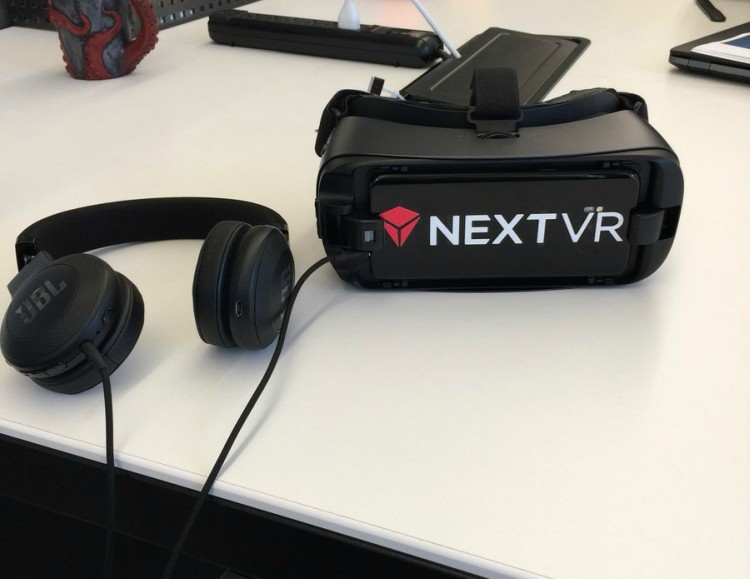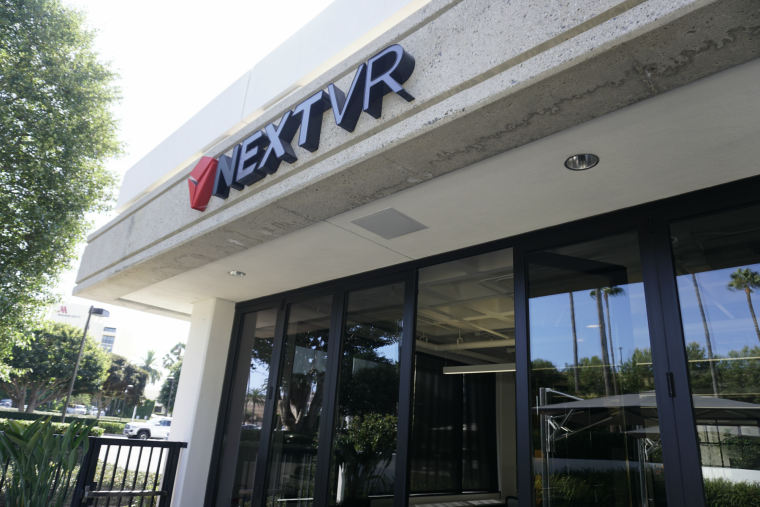
Though it’s probably never occurred to most nerds outside of the tech industry, OC is home to one of the biggest growing technology hubs in the country. Recently that distinction branched into the music world and the way we could be watching concerts in the next few years. One company is particular, NextVR, just took the possibilities to a whole new level.
The digital landscape of millennials continues to morph and expand, as 2017 has shown great progress in the world of virtual and augmented reality. The days of going to an IMAX film for a 3D screening are already becoming a thing of the past as wearable technology shoots to the forefront.
Next VR, which started in Newport Beach in 2013, has become the industry leader in virtual reality and now offers a, one-of-a-kind, unique experience with the help of its partnership with Live Nation. Through this agreement, fans are now able to watch performances in VR from the comfort of their homes.
On a recent Saturday afternoon, they invited me to their headquarters, next to Fashion Island, to receive a hands-on demonstration. The Global Citizen Festival was set to take place on the Great Lawn of Central Park in New York City. The annual concert featured A-list talent in Stevie Wonder, Green Day, The Killers, The Lumineers & The Chainsmokers, plus Big Sean and Alessia Cara.
As a VR virgin I wasn’t quite sure what to expect. What I found out was this effortless excursion took me 3,000 miles across the country and provided a front row seat to an amazing show. There were multiple cameras set up on stage and I could choose any one in particular or select the director’s view, where the camera cuts to different angles based on the live broadcast.
How does one view a concert or sporting event in VR? I’m glad you asked. To start you will need three things:
-Samsung smartphone
-Download the Oculus app
-GearVR headset
Once you have these essentials in play, sit back, relax, and enjoy the show.
Seeking to learn more and fully understand the intricacies of this new world I spoke with David Cole, the CEO and Co-founder of NextVR.
“The company originally launched in 2009 as Next 3D for live television, primarily in the live sports business. In 2013 we reflagged the company as NextVR, a fairly dramatic shift,” Cole says. The mission statement was “To capture and transmit reality in perfect fidelity.”
But wait, why is a start-up company like this in OC? Isn’t Silicon Valley the ideal location?
“If you were to draw a Venn diagram of where you would put a new entertainment technology start-up, with our particular growth dynamics, you would likely put the company within 10-square miles of where we landed,” Cole explained.
“Proximity to Hollywood, for the entertainment component of the business, has been very critical. We’re in the mobile business, roughly 85-90% of the market in VR right now is consuming the content on their phones and truly the epicenter of mobile technology business is between here and San Diego with Qualcomm,” he says.
Of course there are tangible differences we cannot ignore between a virtual concert and one in real life. Lying down on the grass of Central Park or the polo fields at Coachella; smelling the aromas of weed, whiskey and pizza, for example, simply can’t be replicated through a headset.
Some pro and con takeaway’s from my VR adventure:
Pro: Adjustable headset for a snug fit, ability to stand or sit freely where desired, no annoying hippies or ravers in your peripheral vision, getting lost in the moment and enjoying the concert.
Con: Eating / drinking / bathroom breaks mostly require unplugging yourself from the device, wearing headphones may feel cumbersome, interacting with friends is not an option, feeling the pulse of the crowd is hard to gauge, social media FOMO is real.
With Live Nation’s strong musical roots, I wanted to hear more about their partnership with OC’s tech leader.
“Live music was absolutely a No. 1 priority to the (VR) platform,” Cole says. “The two earliest pieces of content that we produced internally were a Coldplay concert and a (Golden State) Warriors basketball game. Live Nation actually came to us with the concept of building a relationship.”
“Live Nation does upwards of 28,000 live shows a year,” Cole continues. “They are without a doubt the largest cornucopia of riches when it comes to live music on the planet. When they came to us we were immediately receptive but it was their idea to put the relationship together.”
One aspect that I had not considered before with VR was being that guy without a ticket trying to get into a sold-out show. If I was unable to secure seats and still wanted to attend, virtual reality is a solid backup solution. It beats standing like a pack sardine with people farting, blowing smoke in your face and blocking your view.
Ever wondered what your favorite band or DJ does to pregame? Live Nation has you covered. “Extending the fan experience like going backstage, and private moments with the artists; sharing these elements, even if you attend, (you) would not be able to see,” Cole later shared.
Who exactly is VR technology geared towards? Is it high school and college kids as beta testers? Perhaps Baby Boomers and the older crowds looking to join the party? The demographics are an interesting element to this wave of innovation.
 “One of the fundamental evolutions of the marketplace has been mobile consumed virtual reality. It’s very different then you would assume from a platform powered by PC. That would be skewed very gamer centric, 30-year old males,” Cole informed.
“One of the fundamental evolutions of the marketplace has been mobile consumed virtual reality. It’s very different then you would assume from a platform powered by PC. That would be skewed very gamer centric, 30-year old males,” Cole informed.
“In terms of age, general interests, and sex, it’s much more broad than we expected in the outset. We thought we would very much be growing a fanbase from a core of gamer enthusiasts,” I learned from Cole.
Music is a big component to NextVR, however, they also have sports contracts with the NBA, boxing, tennis and soccer leagues worldwide. As a Lakers fan I wanted to find out what it’s like watching a professional game from home versus inside Staples Center.
“Our cameras are always close to the action, which means that you feel the intensity more. The thrill of victory and agony of defeat as they say,” Cole says.
The one element you may be asking after all of this is, what if I don’t have a Samsung phone? Like many, I’m an iPhone lifer. This presents a conflict as a consumer. Will I buy a second phone simply for entertainment? With Apple’s latest keynote address debuting Augmented Reality for its iOS 11 software, I inquired about the possibilities down the line.
“We’ve really only seen the tip of the iceberg from Apple. From their hiring, acquisitions, and filing patents and what Tim Cook has said personally. There’s lots to come from them; it’s mostly been targeted at developers to get them interested in iOS as a platform for immersive media,” Cole says
After a full day of conversations and concert viewing, there seems to be no limit to the level of reality we’ll be able to simulate in our entertainment viewing, right down to the mundane details.
“6DoF, or six degrees of freedom is coming to platform. Imagine a referee was standing in front, blocking your view. Now you can scoot two feet to the left and look around him; that increases viewer realism dramatically,” Cole says.
Michael Silver is a journalist and photographer based in Southern California. He covers music, sports, technology, and streetwear. Tips & pitches: [email protected]

